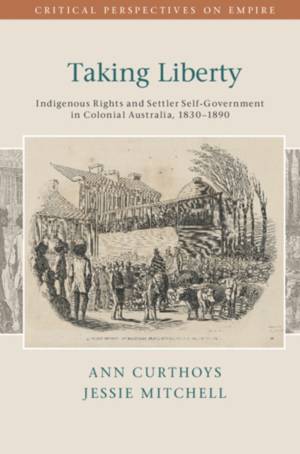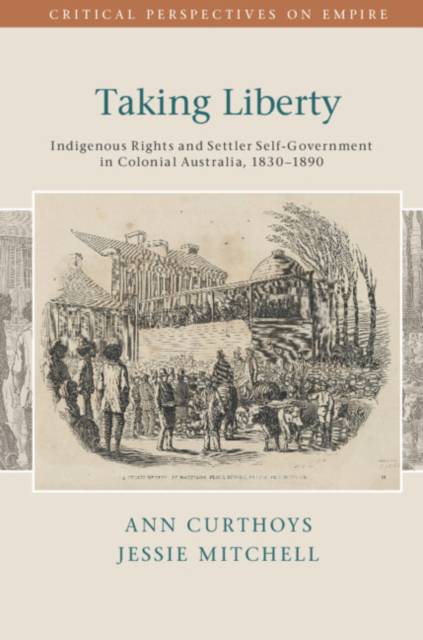
- Afhalen na 1 uur in een winkel met voorraad
- Gratis thuislevering in België vanaf € 30
- Ruim aanbod met 7 miljoen producten
- Afhalen na 1 uur in een winkel met voorraad
- Gratis thuislevering in België vanaf € 30
- Ruim aanbod met 7 miljoen producten
Zoeken
Taking Liberty
Indigenous Rights and Settler Self-Government in Colonial Australia, 1830–1890
Ann Curthoys, Jessie Mitchell
€ 206,45
+ 412 punten
Omschrijving
At last a history that explains how indigenous dispossession and survival underlay and shaped the birth of Australian democracy. The legacy of seizing a continent and alternately destroying and governing its original people shaped how white Australians came to see themselves as independent citizens. It also shows how shifting wider imperial and colonial politics influenced the treatment of indigenous Australians, and how indigenous people began to engage in their own ways with these new political institutions. It is, essentially, a bringing together of two histories that have hitherto been told separately: one concerns the arrival of early democracy in the Australian colonies, as white settlers moved from the shame and restrictions of the penal era to a new and freer society with their own institutions of government; the other is the tragedy of indigenous dispossession and displacement, with its frontier violence, poverty, disease and enforced regimes of mission life.
Specificaties
Betrokkenen
- Auteur(s):
- Uitgeverij:
Inhoud
- Aantal bladzijden:
- 444
- Taal:
- Engels
- Reeks:
Eigenschappen
- Productcode (EAN):
- 9781107084858
- Verschijningsdatum:
- 11/10/2018
- Uitvoering:
- Hardcover
- Formaat:
- Genaaid
- Afmetingen:
- 239 mm x 152 mm
- Gewicht:
- 816 g

Alleen bij Standaard Boekhandel
+ 412 punten op je klantenkaart van Standaard Boekhandel
Beoordelingen
We publiceren alleen reviews die voldoen aan de voorwaarden voor reviews. Bekijk onze voorwaarden voor reviews.








